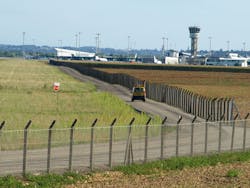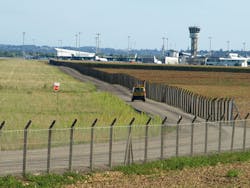U.S. Department of Homeland Security testing and evaluating small unmanned aircraft systems
NORMAN, Okla., 27 March 2013. Border security folks want to see over the next hill, at night, etc., and small unmanned aircraft systems (SUAS) provide those capabilities, describes Kirk Kloeppel from the Borders and Maritime Security Division, Homeland Security Advanced Research Projects Agency (HSARPA), Department of Homeland Security (DHS) Science & Technology (S&T) Directorate. For this reason, DHS officials are evaluating roughly 50 companies’ SUAS platforms and technologies.
DHS SUAS missions include: tactical applications (rapid response, situational awareness), tracking people and vehicles of interest, support maritime interdiction and boarding operations, forensic analysis, and rural interdiction.
SUAS such as fixed-wing and rotorcraft models with gimbaled or body-fixed sensors and mixed payloads with wide ranges and options are filling many needs and capability gaps – law enforcement, search and rescue, fire response and mapping, situational awareness, and more.
The DHS Robotic Aircraft for Public Safety (RAPS) program currently is evaluating SUAS for homeland security applications. To evaluate overall performance and utility of SUAS and onboard sensors using one test applied uniformly to all systems to be tested, realistic operational scenarios and environments and risk reduction and safe use.
DHS SUAS test objectives include law enforcement, disaster and major event response, fire and hazardous material (HAZMAT), operational, and air worthiness effectiveness studies. The goal, says Kloeppel, is the early adoption of small but capable systems.
Airport and border security image courtesy Shutterstock.

